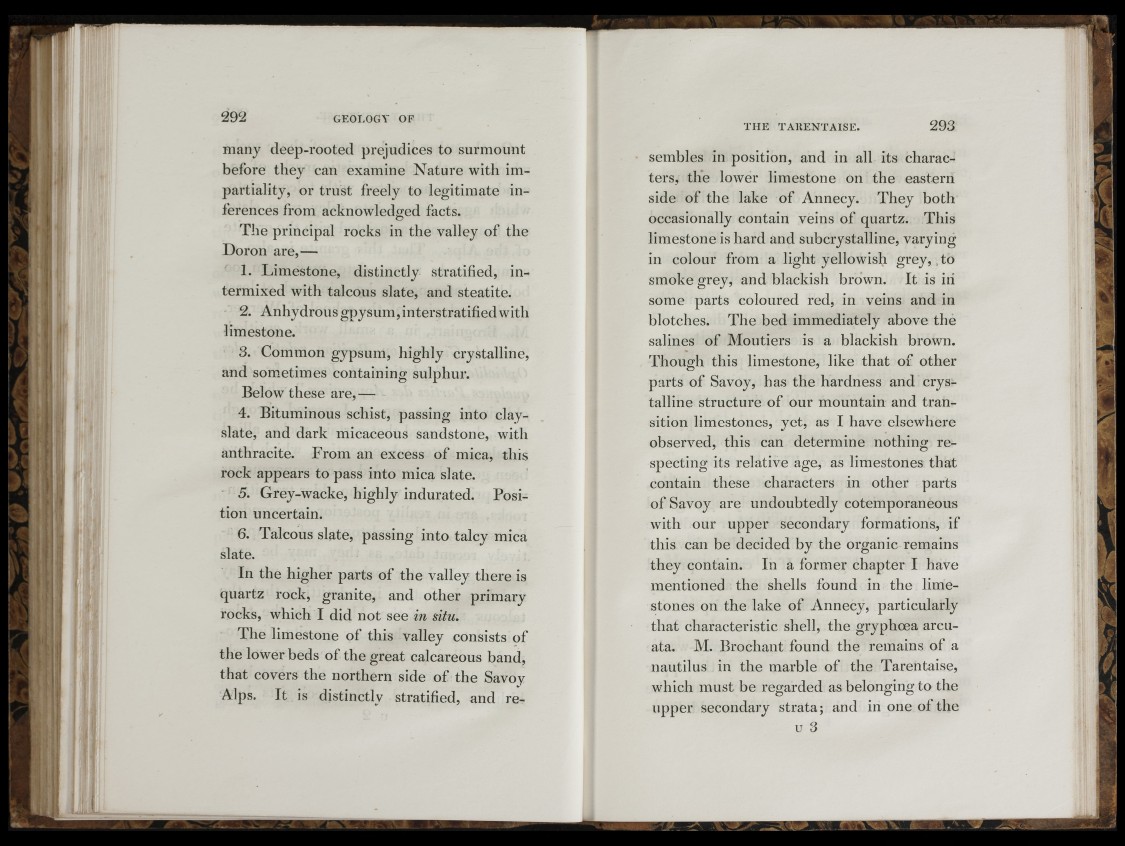
i -li:
INI
-i;
i!i .
292 GEO LO G Y O F
many deep-rooted prejudices to surmount
before they can examine Nature with impartiality,
or trust freely to legitimate inferences
from acknowledged facts.
The principal rocks in the valley of the
Doron are,—
1. Limestone, distinctly stratified, intermixed
with talcous slate, and steatite.
2. Anhydrous gpysum, interstratified with
limestone.
3. Common gypsum, highly crystalline,
and sometimes containing sulphur.
Below these are,—
4. Bituminous schist, passing into clay-
slate, and dark micaceous sandstone, with
anthracite. From an excess of mica, this
rock appears to pass into mica slate.
5. Grey-wacke, highly indurated. Position
uncertain.
6. Talcous slate, passing into talcy mica
slate.
In the higher parts of the valley there is
quartz rock, granite, and other primary
rocks, which I did not see in situ.
The limestone of this valley consists of
the lower beds of the great calcareous band,
that covers the northern side of the Savoy
Alps. It is distinctly stratified, and resembles
in position, and in all its characters,
the lower limestone on the eastern
side of the lake of Annecy. They both
occasionally contain veins of quartz. This
limestone is hard and subcrystalline, varying
in colour from a light yellowish g rey ,, to
smoke grey, and blackish brown. It is iii
some parts coloured red, in veins and in
blotches. The bed immediately above the
salines of Moutiers is a blackish brown.
Though this limestone, like that of other
parts of Savoy, has the hardness and crystalline
structure of our mountain and transition
limestones, yet, as I have elsewhere
observed, this can determine nothing respecting
its relative age, as limestones that
contain these characters in other parts
of Savoy are undoubtedly cotemporaneoiis
with our upper secondary formations, if
this can be decided by the organic remains
they contain. In a former chapter I have
mentioned the shells found in the limestones
on the lake of Annecy, particularly
that characteristic shell, the gryphcea arcuata.
M. Brochant found the remains of a
nautilus in the marble of the Tarentaise,
which must be regarded as belonging to the
upper secondary strata; and in one oi the
u 3